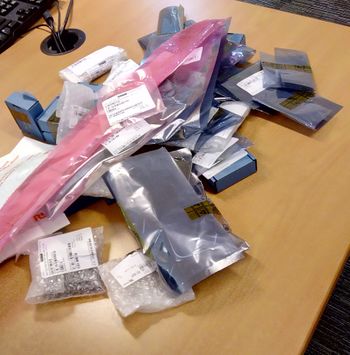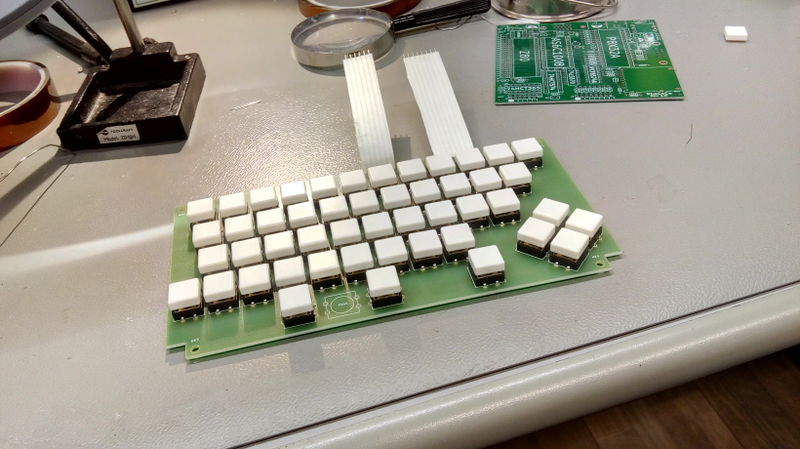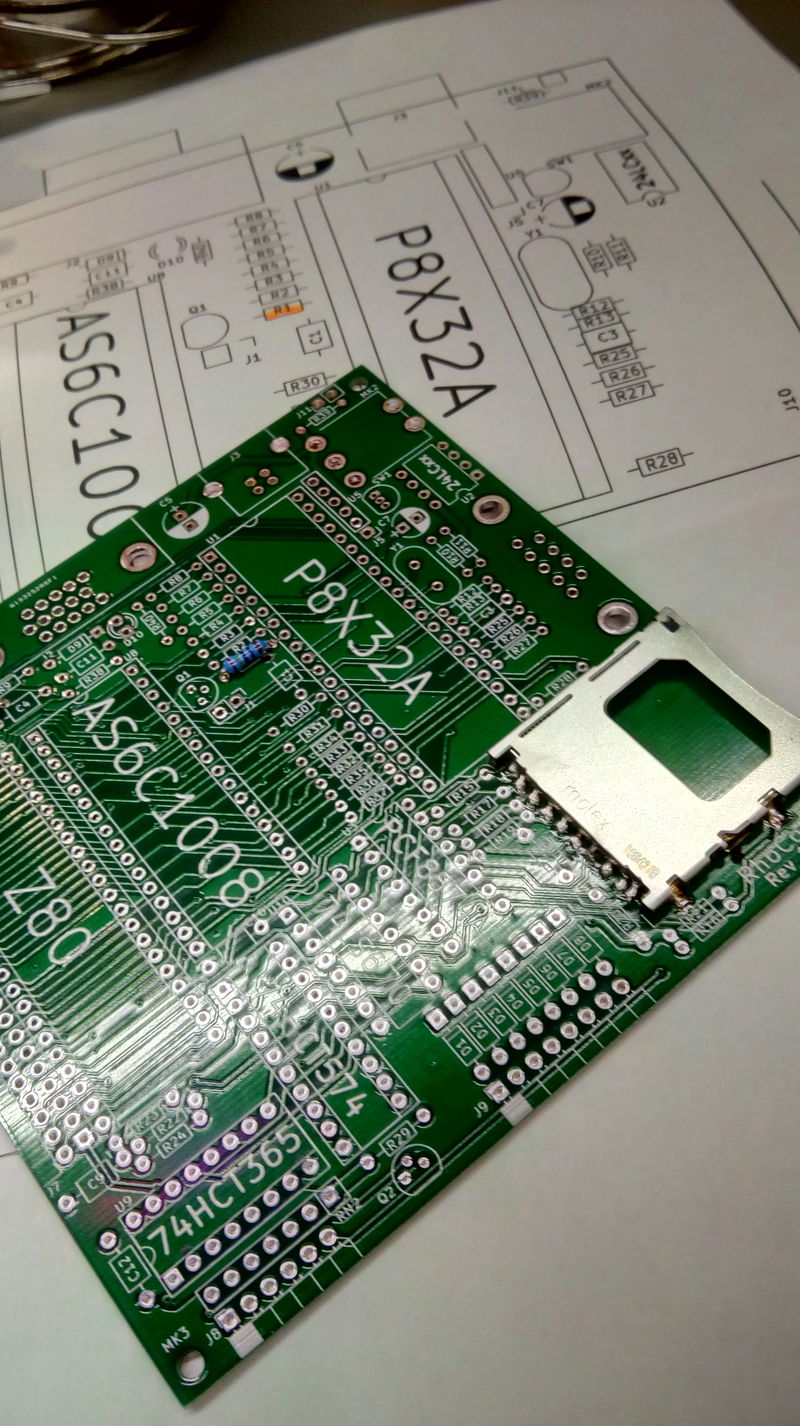Assembling RhoCoCo: Difference between revisions
No edit summary |
No edit summary |
||
| Line 14: | Line 14: | ||
Then we do the resistors, and the diodes by bending them into shape. | Then we do the resistors, and the diodes by bending them into shape. | ||
I practice I decided I wanted to build up the keyboard first, but quickly ran up to a problem, all the holes for the keys were too small to fit the pins of the keys through, and I had to drill all 400 holes with a 1.5mm drill (through a stack of three PCB's) | I practice I decided I wanted to build up the keyboard first, but quickly ran up to a problem, all the holes in the keyboard PCB for the keys were too small (smaller than 1mm) to fit the pins of the keys through, and I had to drill all 400 holes with a 1.5mm drill (through a stack of three PCB's). I should have checked if the hole size of this library footprint was correct. | ||
Then I soldered 49 keys, and two connector strips to the PCB's. | |||
This is the result: [[File:IMG 20190330 205013.jpg|800px]]. | This is the result: [[File:IMG 20190330 205013.jpg|800px]]. | ||
| Line 25: | Line 25: | ||
[[File:IMG 20190330 212947.jpg|800px]] | [[File:IMG 20190330 212947.jpg|800px]] | ||
You can also see a resistor in this picture, and that it only just fits, with its leads bent straight at the body of the resistor. | You can also see a resistor in this picture, and that it only just fits, with its leads bent straight at the body of the resistor. all resistors I used were designed with 3/10" pitch, for the smallest footprint with classic 1/4Watt resistors possible. | ||
Then I started soldering the resistors, here you can see the 240 Ohm resistors, before soldering, legs bent outwards a bit to keep them in place for soldering. | Then I started soldering the resistors, here you can see the 240 Ohm resistors, before soldering, legs bent outwards a bit to keep them in place for soldering. | ||
[[File:IMG 20190330 213317.jpg|800px]] | [[File:IMG 20190330 213317.jpg|800px]] | ||
Revision as of 21:43, 30 March 2019
| Project Assembling a RhoCoCo home computer | |
|---|---|

| |
| This text describes how to assemble a RhoCoCo home computer from two PCB's, ten (socketed) integrated circuits, a dozen connectors and various other parts. | |
| Status | Initializing |
| Contact | Mahjongg |
| Last Update | 2019-03-30 |
We need, two PCB's, the parts from this list: File:RHOCOCO rev 1.8 assembly list.pdf
a soldering iron, and this assembly drawing to locate each part. File:Rhococo rev 1.8 component overview.pdf
In principle we start by soldering the only SMT part to the PCB, the SD-card-connector, this might have been pre-assembled for you. Then we do the resistors, and the diodes by bending them into shape.
I practice I decided I wanted to build up the keyboard first, but quickly ran up to a problem, all the holes in the keyboard PCB for the keys were too small (smaller than 1mm) to fit the pins of the keys through, and I had to drill all 400 holes with a 1.5mm drill (through a stack of three PCB's). I should have checked if the hole size of this library footprint was correct.
Then I soldered 49 keys, and two connector strips to the PCB's.
This is the result:  .
.
Farnell only delivered 49 keys, not 50, so I left the middle of the three-key spacebar out for now.
Next up was soldering the SD-card holder, as I was already afraid of, the card holder had two plastic pins, I had no holes for in the PCB. The datasheet of the card holder was very fuzzy about these two pins, and I could not determine if they really existed. Easy solution was to cut the pins off. Fortunately all the other (solder) pins seemed to be placed correctly.
This is the PCB, with only the card reader soldered to it.

You can also see a resistor in this picture, and that it only just fits, with its leads bent straight at the body of the resistor. all resistors I used were designed with 3/10" pitch, for the smallest footprint with classic 1/4Watt resistors possible.
Then I started soldering the resistors, here you can see the 240 Ohm resistors, before soldering, legs bent outwards a bit to keep them in place for soldering.
